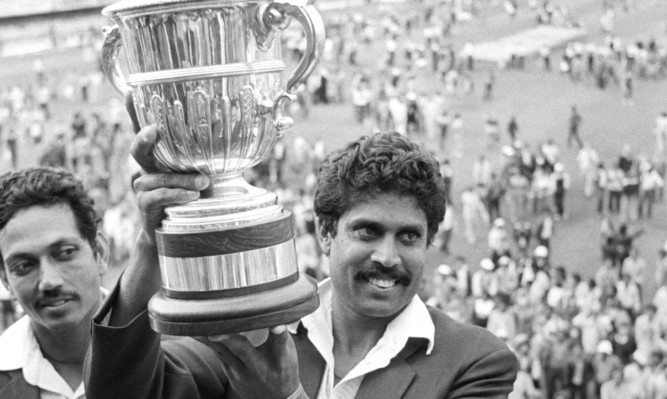
The destiny of modern cricket was changed forever by the events at Lord’s on June 25, 1983.
The occasion was the final of the third Cricket World Cup between India and the West Indies, who were chasing a third successive title.
The West Indies had a team containing some of the finest players ever Clive Lloyd, Viv Richards, Malcolm Marshall, Michael Holding and Joel Garner and were widely expected to brush off the Indians.
That was especially the case as India were bowled out for only 183 as they batted first.
All their opponents had to do was score at little more than three runs an over for 60 overs and the Cup was theirs again.
However, conditions were perfect for swing and seam bowling.
India found two heroes in Madan Lal and Mohinder Amarnath, who each took three wickets, while captain Kapil Dev took a spectacular catch to get rid of danger man Richards.
Amarnath took the final wicket to bowl out West Indies for 140 and secure a most unlikely success.
It was close to midnight back home in India, but the dawn of a new love affair for cricket, and one which has shaped the future of the sport.
India had succeeded on the world stage. Their victory at Lord’s also coincided with the launch of colour television at home, and suddenly the sport became perfect material for TV companies and sponsors.
This shorter form of the game was loved by the younger fans, too, and suddenly street corners in this vast country were filled with bats and balls.
Since that day in 1983, the sport has gone to another level in India.
India’s sheer size and growing commercial power makes it the sport’s modern powerhouse, and Indian players have become household names.
Batsman Sachin Tendulkar achieved iconic status in his 23 years as part of the Indian team. Everyone stopped whenever he went out to bat.
Meanwhile, current captain Mahendra Singh Dhoni is one of the most well-known people in Asia, with lucrative sponsorship deals with some of India’s biggest companies.
Last year, Dhoni was 22nd in the Forbes List for the highest-earning sportspeople.
No other cricketer came in the top 100!

Enjoy the convenience of having The Sunday Post delivered as a digital ePaper straight to your smartphone, tablet or computer.
Subscribe for only £5.49 a month and enjoy all the benefits of the printed paper as a digital replica.
Subscribe